Best of India Tours
- Golden Triangle Tour- Best of India & Nepal
- Classical Rajasthan
India Cultural Tours
- Images of North India- Karnataka Heritage
- Rajasthan & Goa Tour
Discover India Tours
- Grand India Tour- North to South India
- Central to South India
Rajasthan Tours
- Classical Rajasthan Tour- Golden Triangle Tour
- Grand Mughal Tour
India Luxury Trains
- Palace on Wheels- The Golden Chariot
- India Deccan Odyssey
- The Indian Maharaja
- Royal Rajasthan on Wheels
Nepal Tours
- Glimpses of Nepal- Buddhist Pilgrimage
- Nepal River Rafting
- Destinations of Nepal
- Nepal General Info
India Wildlife Tours
- North India Wild Life- South India Wildlife
Tibet Tours
- Tibet Monastery Tours- Explore Tibet
- Destinations of Tibet
Spa & Yoga Tours
- Ananda in Himalayas- Yoga & Meditation
Adventure Tours
- Manali Safari Tour- Himalayan Trekking
- Horse Safari
Madurai
Chennai
![]() Chidambram
Chidambram
![]() Coimbatore
Coimbatore
![]() Kodaikanal
Kodaikanal
![]() Madurai
Madurai
![]() Mahabalipuram
Mahabalipuram
![]() Ooty
Ooty
![]() Pondicherry
Pondicherry
![]() Tanjore
Tanjore
![]() Trichy
Trichy
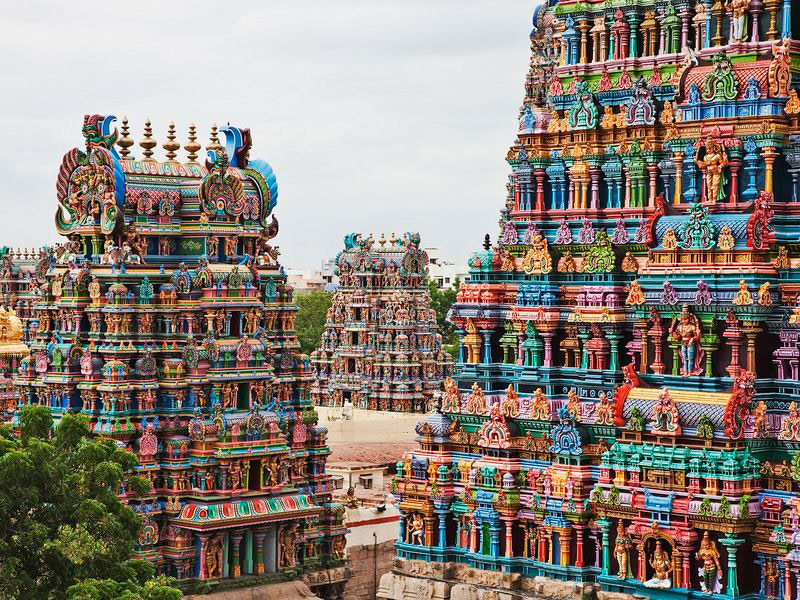
One of the oldest cities in South India, Madurai has been the centre of learning and pilgrimage for centuries. Spread along the rocky banks of the river Vaigai in the state of Tamil Nadu, this modern industrial city is today famous as a temple town. The history of Madurai dates back to prehistoric times. Archaeological evidences unearthed from this region suggest the existence of settlements in the Megalithic Age and the Neolithic Age. The earliest recorded history of Madurai, available from the fourth century BC, can be found in the Tamil and Greek documents.
The ancient city had links with Greece and Rome and traded primarily in spices. Madurai also finds mention in many ancient texts and especially the Puranas, where sage Agastya eulogizes the greatness and glory of the city. The city of Madurai has been ruled by various dynasties. The Cholas took over the city in the 10th century AD. The Pandyas regained control in the 12th century AD, only to loose it again to the invaders under Malik Kafur. In 1364, the Vijayanagar kingdom was established with the overthrowing of the dynasty established by Malik Kafur. The Nayaks, who were the local governors of Madurai, took over the city after the fall of the Vijayanagar kingdom in 1565 and ruled it till 1781. It was during this period that Madurai reached its cultural zenith. The city was taken over by the British East India Company in 1801.
The summers in Madurai can get very hot with the with temperature going up to around the 40°C. Winters are the best season to visit the city, as the daytime temperature is around 20°C making it pleasant for all excursions.
Sightseeing
Along with its burgeoning industrial set up, the legends, myths and the thousands of pilgrims swarming the city have given Madurai a unique character and ambience. The architectural marvels of the temples and the exquisite sculptures fascinate all those who have a look at them. You can also participate in the many festivals and regale in the rich tradition of the locals. Some of the major attractions in the city are the Meenakshi Temple, Tirumalai Nayak Mahal, The Gandhi Museum, Koodal Azhagar Temple, Vandiyur Mariamman Teppakulam and Pazhamudhirsolai.
Excursions
Excursions around Madurai can be equally interesting. You can travel to many scenic spots in the Western Ghats that are located around the city. A trip to Kodaikanal, one of the country’s most beautiful hill stations, is not be missed. You can also visit Rameswaram, which is considered one of the most important pilgrimage sites for the Hindus. The town is also famous for its enchanting beaches.
Excursions for Madurai
Meenakshi Temple
One of the most important places of Hindu pilgrimage, the Meenakshi-Sundareswarar temple is located at the heart of the city and is the hub of the religious and cultural life of the city. Built by Kulasekara Pandya in the pre-Christian era, the temple was in ruins before it was rebuilt by Tirumalai Nayak. Spread over six hectares, the temple is an outstanding example of Vijayanagar temple architecture. The temple has four entrances to it and its gopurams (large gateways) and mandapams (multi-pillared halls) are covered from top to bottom in a profusion of multi-coloured images of gods, goddesses, animals and mythical figures. The southern gopuram, which is about 48.4-metre-high is the most spectacular of all gopurams, and has over 1,500 sculptures. You can even climb the gopuram to get a panoramic view of the city. The sculpted pillars in the Ashta Shakti Mandapam inside the Meenakshi temple tell the story of the beautiful princess of Madurai and her marriage to Lord Shiva.
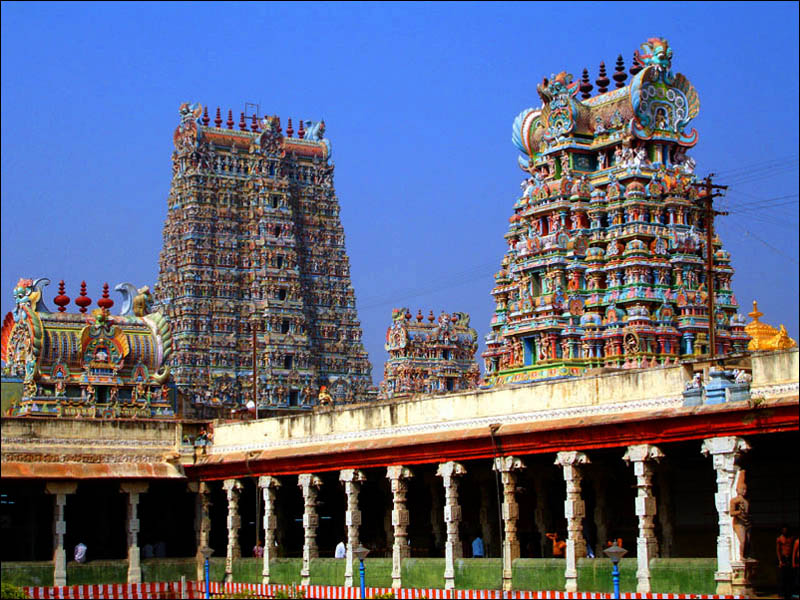
Legend has it that the princess was actually an incarnation of Parvati who came to earth to honour a promise. Shiva came to Madurai as Sundareswarar to marry Meenakshi, and the two ruled over the kingdom for many years. The spot from where they left for their heavenly abode is where the temple now stands. It is believed that the Sangam litterateurs decided the merit of the literary works presented to them at Portamaraikulam (literally, the golden lotus tank). The manuscripts that sank in the tank were dismissed while those that floated were considered great works of literature. The two presiding deities are seated at Oonjal Mandapam on the western end of this tank. The deities are worshipped every Friday on a swing. Next to this is the Kilikootu Mandapam (hall of parrots) where some beautiful sculptures as well as parrots that chant the name of Meenakshi can be seen. The shrine dedicated to the goddess is just beyond this hall and entry is restricted only to Hindus. Within the temple is located an art gallery. The gallery contains beautiful stone and brass images and some fine examples of South Indian scripts and friezes.
Tirumalai Nayak Mahal
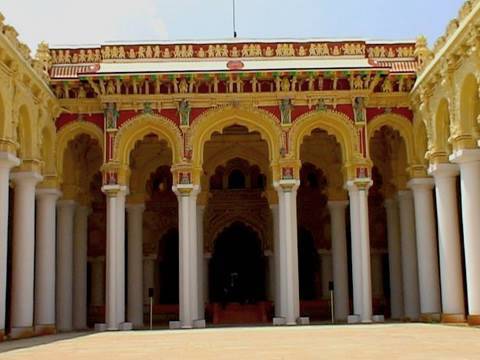
About 1 km from the Meenakshi Temple lies the palace of Tirumalai Nayak. Constructed in 1523, this Indo-Saracenic building was originally four times as large as it is today. Swarga Vilasam, which served as the audience hall, is the most remarkable part of this palace. Its dome, which lies beyond a huge courtyard and rises to a height of 20 metres without any support, is a magnificent example of the engineering skills of its builders. You can also watch the sound and light shows on the life of Tirumalai Nayak and the story of Silappathikaram (a Tamil classic) here.
The Gandhi Museum
Housed in the old palace of the Rani Mangammal and dedicated to Mahatma Gandhi, the museum provides a historical account of India’s struggle for independence. A bookshop in the premises of the museum offers a good collection of books on Gandhi.
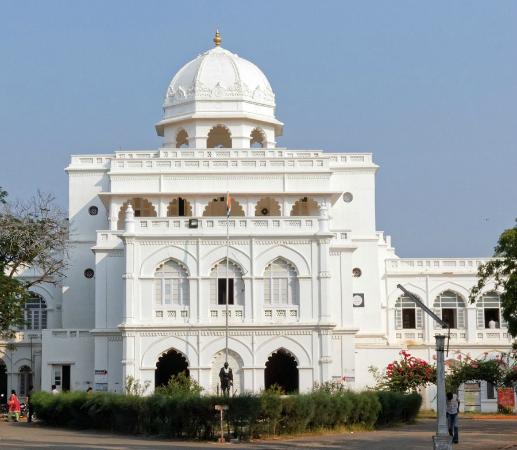
Koodal Azhagar Temple
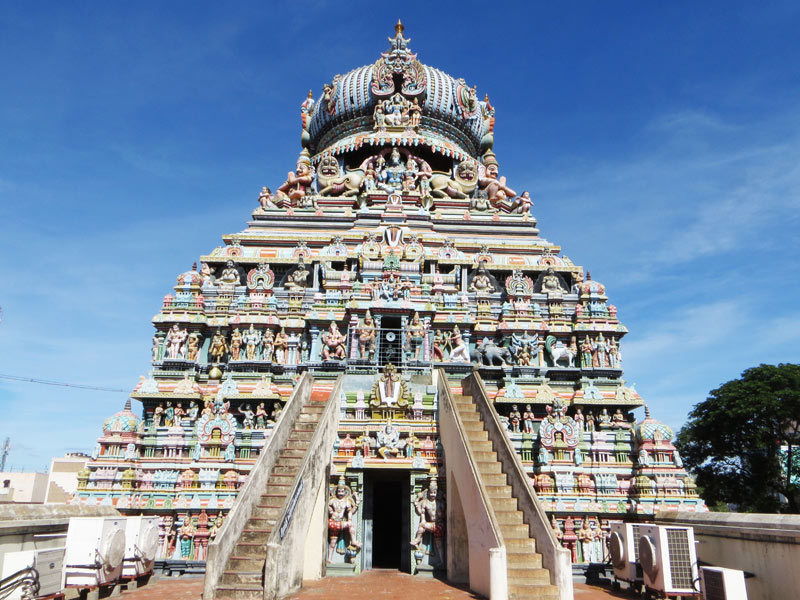
Two kilometres to the west of Madurai is located the Koodal Azhagar Temple, an ancient Vaishnavite temple. The temple has a statue that depicts Lord Vishnu in three poses—sitting, standing and reclining—one above the other.
Vandiyur Mariamman Teppakulam
Five kilometres east of the Meenakshi temple is a tank called Vandiyur Mariamman Teppakulam. At the centre of the tank is an idol of Lord Vinayaka or Vigneshwara installed on a platform. The tank was built by Tirumalai Nayak in 1646 and is connected to the Vaigai River by underground channels. The tank is also the site of the annual Teppakulam float festival conducted in the month of January-February.
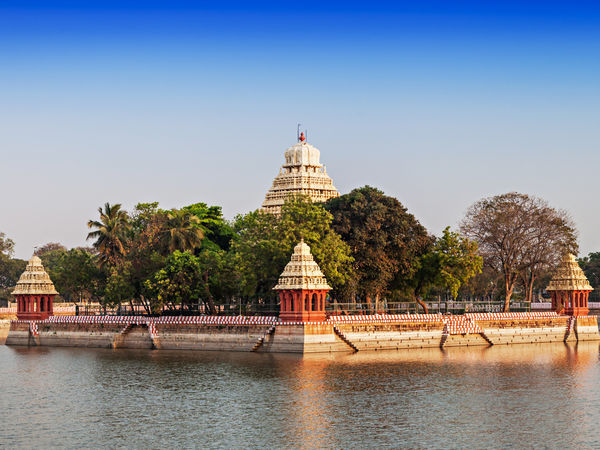
Pazhamudhirsolai
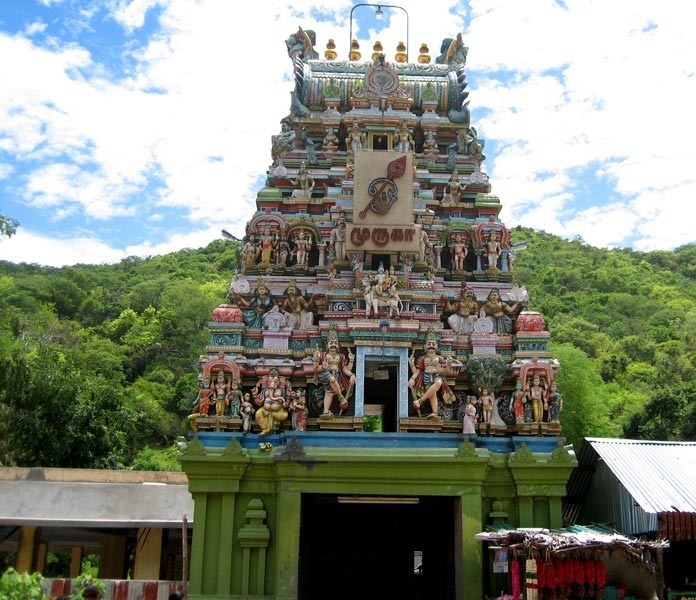
Located on a picturesque wooded hill, Pazhamudhirsolai is one of the six abodes of Lord Subramanya.
Kodaikanal
Around 120 km away from Madurai lies Kodaikanal, one of the most beautiful hill stations in India. It is situated in the Western Ghats at a height of 2,130 metres above sea level. The focus of the town is the lake created in 1910 by the building of the dam. You can go in for boating or fishing in the lake. For fishing, you need to take prior permission. You can also take pleasant strolls among the wooded hills and have a look at the picturesque waterfalls.
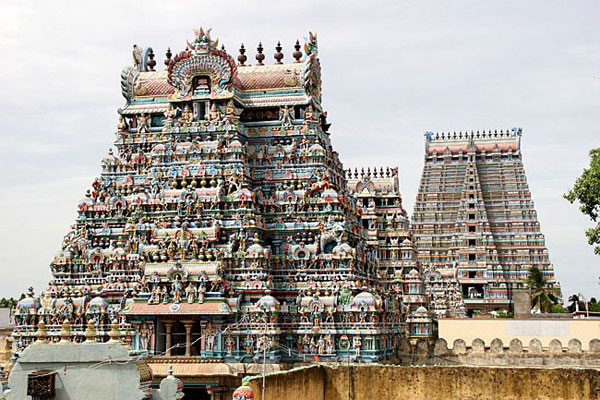
Rameswaram

Located on an island in the Gulf of Mannar, Rameshwaram is connected to the mainland by the Indira Gandhi Bridge, which is regarded as one of India’s engineering wonders. The town has many temples dedicated to various Hindu gods and goddesses. It is considered one of the most important pilgrimage sites for the Hindus. Sacred for both Vaishnavites and Shaivites, it is said that no Hindu pilgrimage is complete without a visit to this holy city. Apart from the temples, the beaches of Rameshwaram are also worth paying a visit.
Vaigai Dam
About 70 km from Madurai on the way to Thekkady lies Vaigai Dam, a popular picnic spot with beautiful, well laid out gardens. The dam offers a breathtaking sight on weekends when it is illuminated.
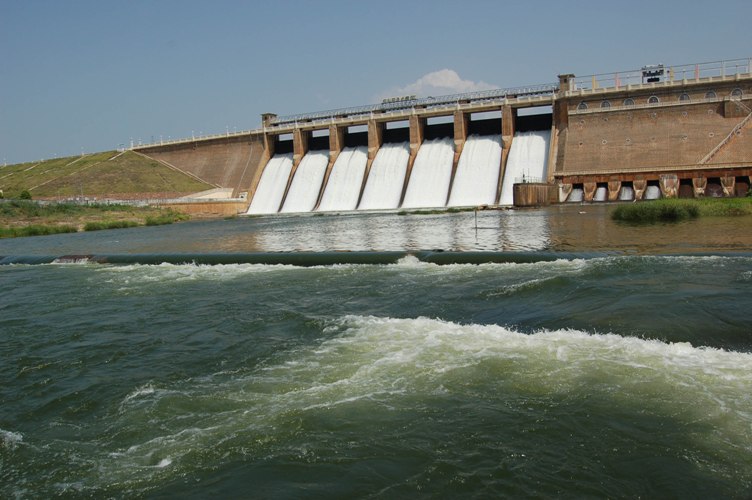
Fact File
 Area: 46.99 sq. km
Area: 46.99 sq. km
 Population:9,40,989
Population:9,40,989
 Altitude: 101 metres above sea level
Altitude: 101 metres above sea level
 Best Time to Visit: October-March
Best Time to Visit: October-March
 Languages:Tamil, English
Languages:Tamil, English
 STD Code:0452
STD Code:0452
Click below for Tours of Madurai, Tamilnadu & Kerala Tours
-
South India Panorama
Chennai – Kanchipuram – Mahabalipuram - Trichy – Tanjore – Madurai – Rameshwaram - Periyar - Kumarakom - Kovalam - Kanyakumari – Trivandrum – Cochin – Munnar – Coimbatore – Ooty – Mysore – Hassan – Bangalore – Hampi – Badami – Goa - Bombay (Duration )
 Duration:(30 Days)
Duration:(30 Days) -
Explore South India Tour
Chennai - Mahabalipuram - Pondicherry - Trichy - Madurai - Trivandrum - Allapuzha - Cochin - Coimbatore - Ooty - Mysore - Hassan - Bangalore - Goa - Mumbai
 Duration:(21 Days)
Duration:(21 Days) -
Temples & Back Waters of South India
Mumbai - Madurai - Periyar - Kumarakom - Cochin - Mysore - Hassan - Bangalore - Mumbai
 Duration:(13 Days)
Duration:(13 Days)




